- Home
- Encyclopedia
- The Establishment of Grand Teton National Park
The Establishment of Grand Teton National Park
The establishment of Grand Teton National Park in its current form in 1950 ended a 30-year controversy over attempts to extend federal government control in northwestern Wyoming. At the peak of the controversy in the early 1940s, some Jackson Hole residents warned that National Park Service control of the area meant "your recreational privileges in Jackson Hole will be practically at an end. There will be ‘don't’ signs staring you in the face every mile or less," in the words of an unsigned letter circulated in the area at the time.
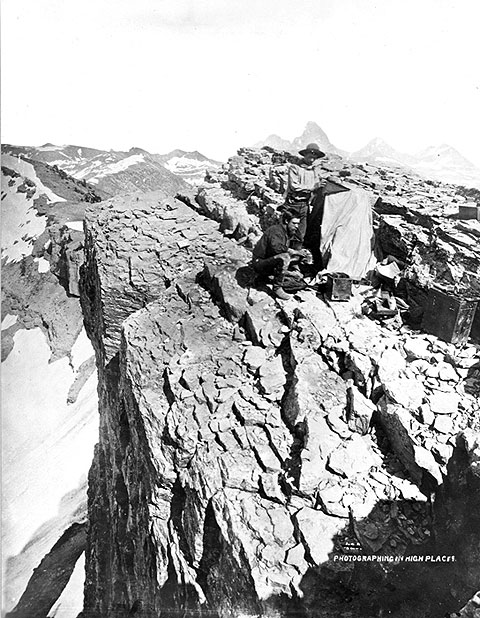
Other residents, however, supported federal control as a means of conservation. The National Park Service, philanthropist John D. Rockefeller, Jr., and national media entered the fray and enlarged the debate. In the end, the establishment of the park preserved some of the most spectacular scenery in North America. Nearly three million tourists now visit the park every year.
Grand Teton National Park, located in northwest Wyoming, includes the northern portions of the Teton Range and the valley of Jackson Hole. Viewed from the east, the Tetons rise abruptly from the flat valley floor. Since they are among the youngest mountains in North America and still actively growing, they have not had time to become heavily eroded; their jagged outline was sculpted by moving ice during the last glacial period. In Jackson Hole at the base of the mountains, several glacial lakes feed the river as it winds south through the valley, lakes that are also contained within the park.
Archeological evidence shows that Native Americans first appeared in Jackson Hole approximately 10,000 years ago. The ruggedness of the country and its inhospitable winters meant that most Indian bands visited the area in summertime only, although the Mountain Shoshone, also known as Sheepeaters, did live there year-round. The first European residents of the area were fur trappers and outlaws who began arriving in the early 19th century. Because of the rough terrain and severe weather, homesteading did not begin until the 1880s.
Early conservation efforts
Jackson Hole, named for fur trapper David Jackson, was soon recognized as a remarkable place. English mountaineer William Baillie-Grohman wrote in an 1882 memoir that "there are few spots in the Western mountain lands about which there hangs so much frontier romance," and attributed this to "the quite exceptional natural beauty of the spot."
By that time, the idea of conservation of beautiful places was already beginning to gain some support. Ferdinand Hayden, chief of one of four U.S. government surveys then investigating the West, sent a small party in 1872 to explore and photograph the Tetons and Jackson Hole. Hayden told his photographer, William Henry Jackson, that he hoped to generate "widespread public interest" in the natural attractions of public lands. In addition to Jackson, who took the first known pictures of the Tetons, the party included climber Nathaniel Langford, who claimed to have reached the summit of the Grand Teton—the highest peak of the Teton Range—on this trip.
In 1897, President Grover Cleveland took the first step toward conservation of the Tetons with the establishment of Teton Forest Reserve on 829,440 acres south of present-day Yellowstone National Park. Climber, surveyor and Wyoming State Auditor William Owen earned credit for the first ascent of the Grand Teton in 1898 (and spent much of his later life working to defend his claim).
In 1908, President Theodore Roosevelt expanded the reserve into the 1,991,200-acre Teton National Forest, covering all of the Teton Range and including half of the land that would later become Grand Teton National Park. In 1918, President Woodrow Wilson made a move toward more protection of the area by giving the National Park Service veto power over any development plans the Forest Service might have in 600,000 acres of the northern Tetons.
Local opposition
A proposal to change part of Teton National Forest to a national park was drafted that year by the National Park Service and introduced by Wyoming Congressman Frank Mondell. The bill passed the House easily, but was defeated in 1919 in the Senate by the parliamentary maneuverings of Sen. John Nugent of Idaho. Idaho sheep ranchers who used the affected land as summer pasture worried that their grazing rights would be curtailed, as had happened in other national parks, and persuaded Nugent to object.
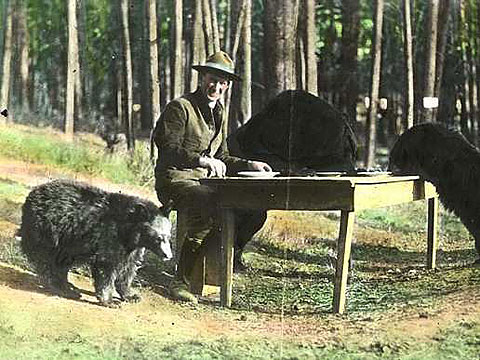
With the defeat of this first proposal, fresh, local opposition began to crystallize in Jackson Hole, led by residents who disliked the idea of a national park. It was becoming clear how effective a small, determined resistance could be.
This local opposition was at least partly fueled by the different conservation philosophies of the U.S Forest Service and the National Park Service. The Forest Service, part of the Department of Agriculture, manages its land to yield goods and revenue in as many ways as possible, including timber, livestock pasture, and recreational development. Conservation is also a priority, but national forests provide many more commercial opportunities than national parks.
The National Park Service, part of the Department of the Interior, limits development, strictly regulates visitor activities and places its first priority on long-term preservation of the natural state of the area. Residents who disliked the prospect of increased federal government control in any form were hostile to the Park Service, expressing their views at public meetings and in the Jackson Hole Courier.
This attitude, however, changed over the next decade as development proceeded and tourism increased in Jackson Hole. Between 1919 and 1923, private irrigation companies proposed a series of dams on lakes within the national forest while lodges and summer cabins sprouted on private and public land throughout the valley. The Park Service, with the veto power Wilson had given it over Forest Service plans, prevented the irrigation project and canceled a plan to construct up to 6,000 summer tourist cabins in the more accessible parts of the national forest.
These actions appear to have lessened the distrust of some residents, particularly dude ranchers whose livelihoods depended on tourists attracted by the scenic value of the area. In 1923, several dude ranchers invited the superintendent of Yellowstone Park, Horace Albright, to meet with them and discuss future conservation of the Tetons and Jackson Hole. As explained later by longtime Jackson Hole naturalist Olaus Murie, one of the biggest conservation problems in the area at that time was the increasing development of private land. As a solution, the dude ranchers suggested that a rich philanthropist be found to buy a large amount of land in northern Jackson Hole and donate it to the government.
Rockefeller steps in
Albright, encouraged by this local support, began searching for such a backer. In 1927, John D. Rockefeller, Jr. agreed to buy as much as 114,170 acres in northern Jackson Hole at a cost of $1,397,000. But to prevent inflation of land prices, Albright wanted the source of the money and purpose of the acquisition to remain secret.
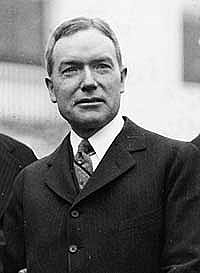
With the help of Rockefeller's lawyers, the Snake River Land Company was formed as a front, and Jackson banker Robert Miller was hired to negotiate the sales. Miller, who opposed a national park from the beginning, was not told the purpose of these purchases, but he promised Olaus Murie, as Murie wrote decades later, that whatever it was it "would be a great thing for the valley."
A national park
Meanwhile, as the Park Service continued between 1919 and 1929 to veto Forest Service plans in northern Teton National Forest, both agencies asked officials in Washington, D.C., to clearly assign authority over the area. Albright again urged lawmakers that the unique Teton Range was worth preserving undeveloped; Sen. John B. Kendrick of Wyoming gave his support for a national park; and in 1929, President Calvin Coolidge signed the act creating Grand Teton National Park, at half its present size and formed from federal land within the Tetons. This included none of Miller's purchases within Jackson Hole.
For months, residents of Jackson Hole speculated about why the Snake River Land Company would buy so much land for no apparent purpose. In 1930, after all the desired land was purchased, Albright, now director of the National Park Service, and Rockefeller disclosed their partnership. The secrecy of the project, combined with the association of the National Park Service in the minds of local residents with federal control, all added to Rockefeller's status as an East Coast millionaire, brought on a storm of protest.
Landowners came forward with accusations that they had been coerced into selling their land, or had received an unfairly low price. Wyoming Sen. Robert Carey held public meetings to express his support for residents and wrote to Rockefeller's attorney "We are not willing to see this section of Wyoming exploited or its citizens driven out to gratify Mr. Albright's ambition or to establish a monopoly for the benefit of Mr. Rockefeller's agents."
The Grand Teton, a Jackson Hole newspaper, was formed in 1931 for the express purpose of fighting enlargement of Grand Teton National Park. A few Jackson Hole residents were changing their minds and supporting park extension, but as Murie wrote decades later, the park was a "burning topic...Card parties, dinner parties had their embarrassments if certain ones prominent on 'the other side' were present...There was no such thing as getting together and talking it over."
Expansion stalls
The next step for the Park Service would have been to ask the U.S. Congress for legislation accepting the land from Rockefeller and adding it to the park, but this was not possible. Wyoming’s congressional delegation, especially Carey, refused to endorse any such bill and insisted on an investigation into the land purchases. Hearings were held in Jackson during the summer of 1933. The findings indicated that while most of the accusations of coercion and unfair payment were untrue, the Park Service had not been entirely blameless.
In Jackson Hole, as in most western states, there were homesteaders who had not patented their land within the required five years of taking up the claim, but were still living on it. The U.S. General Land Office often did nothing to repossess such homesteads for seven or eight years or even longer.
In Jackson Hole, however, Park Service agents worked with representatives of the land office to identify and evict residents who did not have legal title to their land. While this practice was not illegal, neither was it in line with the treatment usually given such homesteaders in other parts of the state. In at least one case, GLO officials refused to patent the land of a homesteader who was in fact entitled to the property.
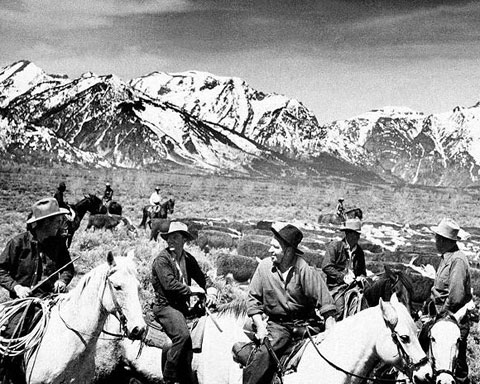
Over the next decade, Rockefeller continued to hold the undeveloped land while the National Park Service tried to get a law passed incorporating it into the national park. The first attempt in 1934 was supported by Carey, by Wyoming Sen. Joseph O’Mahoney (recently appointed on Kendrick’s death) and by Wyoming Gov. Leslie Miller. The Forest Service and the U. S. Biological Survey, precursor to the modern Fish and Wildlife Service, also backed the idea, although both agencies had expressed interest in acquiring the Rockefeller land.
At the last minute, the proposal failed because of opposition in Washington to a provision to reimburse Teton County for the taxes it would lose over 20 years when so much land was transferred from private to federal ownership. Federal Budget Bureau officials feared that setting such a precedent would encourage hundreds of other western counties to demand payments on federal land within their boundaries.
The next obstacle was the National Park Association, an influential, private conservation organization, which opposed including the Rockefeller land in any national park. The association also argued that Jackson Lake, located within the area, was no longer in its natural state because of its expansion by a dam in 1911.
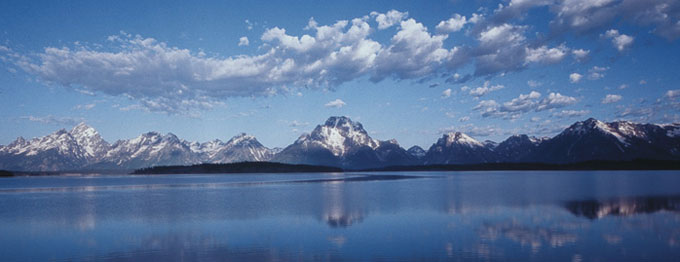
Including the lake in a national park, according to this group, could allow advocates of development to propose dams within other national parks. Additionally, the flat, sagebrush-and-pine-covered land was not nearly as scenic as the Tetons and might, they claimed, harm the reputation of national parks as a whole. The Forest Service also withdrew its support. For these reasons, another attempt to pass a park extension bill in 1938 quickly failed.
A national monument, armed ranchers and a movie actor
In 1942, Rockefeller advised U. S. Secretary of the Interior Harold Ickes that he was unwilling to hold the land much longer. Since there appeared little possibility of getting a bill through Congress, in 1943, President Franklin Roosevelt issued an executive order, which created Jackson Hole National Monument and contained the Rockefeller lands. This was, perhaps, the single most controversial action in the history of the park.
Wyoming Gov. Lester Hunt threatened to remove "any federal official who attempts to assume authority in the monument area," although he never did. Cowboy actor Wallace Beery joined a group of armed ranchers, including future Wyoming Gov. and U.S. Sen. Cliff Hansen, who protested by trailing their cattle without a permit across the grounds of the monument. The Park Service ignored the trespass.
National media picked up the story, Time Magazine reported the ride, and the nationally syndicated conservative newspaper columnist Westbrook Pegler compared Roosevelt's action to Hitler’s annexation of Austria. The reaction of many local residents was expressed in a quote reported years later by Murie in his Wapiti Wilderness: "We gave them the Tetons! What more do they want?"
Congress quickly passed a bill abolishing Jackson Hole National Monument. Roosevelt vetoed it, and three more congressional attempts to abolish the monument never made it out of committee. The state of Wyoming filed suit against the monument superintendent (State of Wyoming v. Franke) to prove that Jackson Hole could not legally be preserved as a national monument because the region was of no particular scientific or historic interest. Evidence to the contrary presented at the trial was convincing, however; and the case was dismissed on a technicality.
A full-sized park
After World War II ended and Americans began to travel more, tourism increased and business in the Jackson area improved dramatically. Local resentment against the creation of the monument gradually decreased. In 1950—31 years after the first attempt to establish a national park—Congress passed and on Sept. 14 President Harry Truman signed a law adding Jackson Hole National Monument to Grand Teton National Park, completing the park as it stands today. Teton County was compensated for the lost tax base and existing grazing rights were protected. There was little controversy locally or nationally.
Tourism thrives in Jackson Hole now. In 2019, 3.4 million tourists visited Grand Teton National Park. Teton County received $90.8 million in taxes and $7.7 million more in lodging taxes, all largely derived from tourism. The presence of the park has allowed residents and tourists both to enjoy, in the words of longtime Jackson Hole naturalist Margaret Murie, "a beautiful piece of wild country in which people love to roam, and heart-lifting scenery. And a bit of wild history…something which will never be exhausted."
Resources
Primary Sources
- "Gun Play." Time Magazine, May 17, 1943, 23.
- Jackson, William. Time Exposure. New York: Van Rees Press, 1940. 186-203.
- Murie, Olaus and Margaret Murie. Wapiti Wilderness. New York: Alfred Knopf, 1966,113-125, 203.
- Notice to Mr. American Citizen, (Unsigned, printed letter circulated in Jackson Hole, early 1940s) Burt Family Collection, Accession No. 07570, Box 1A, Folder: Correspondence-Jackson Monument, University of Wyoming, American Heritage Center, Laramie, Wyo.
- Righter, Robert, ed. A Teton Country Anthology. Boulder, Colo.: Roberts Rinehart, Inc. Publishers, 1990. 23-24, 57,180. Contains excerpts from the writings of William Baillie-Grohman and other early explorers of the region.
Secondary Sources
- Jackson Hole, Wyo., Chamber of Commerce, Comprehensive Economic Indicators, 2006-2011, accessed March 6, 2012, at http://www.jacksonholechamber.com/uploads/EconomicIndicators-Comprehensive.pdf
- National Park Service, U. S. Department of the Interior. National Park Service Public Use Statistics Office, NPS Stats: Grand Teton NP, accessed Dec. 20, 2011, at http://www.nature.nps.gov/stats/park.cfm?parkid=399.
- Righter, Robert. Crucible for Conservation: The Creation of Grand Teton National Park. Boulder: Colorado Associated University Press, 1982. 20-30, 40-65, 110-141.
- Sanborn, Margaret. The Grand Tetons: The Story of the Men Who Tamed the Western Wilderness. New York: J.P. Putnam's Sons, 1978. 17-18, 216-225.
- Liu, Wenlin and Emily Johnson. "Wyoming Sales, Use, and Lodging Tax Revenue Report," 44th edition, November 2019, pp. 17, 68, accessed Sept. 29, 2021 at http://eadiv.state.wy.us/s&utax/Report_FY19.pdf.
For Further Reading
- craigkg. “Jackson Hole National Monument,” accessed 3.9.12 on the Daily Kos website at http://www.dailykos.com/story/2011/02/24/947812/-Jackson-Hole-National-Monument.
Illustrations
- William Henry Jackson’s 1872 photo of himself, his assistant Charles Bell and their darkroom tent is from the U.S. Geological Survey’s photo library. The library includes a treasure trove of free photos of the West by Jackson and other pioneer photographers, at http://libraryphoto.cr.usgs.gov/. They are on the Idaho side of the Tetons, and that’s the Grand Teton faintly visible behind Bell’s head. Jackson titled the picture, “Photographing in High Places.”
- The photo of Horace Albright eating supper with bears in Yellowstone in 1922 is by Yellowstone Park photographer George A. Grant, from Wikipedia.
- The photo of John D. Rockefeller, Jr. is from Google Images.
- The 1943 Associated Press photo of actor Wallace Beery and the armed ranchers trailing cattle across the newly established Jackson Hole National Monument was published also with former Wyoming Gov. and U.S. Sen. Clifford P. Hansen’s obituary in the New York Times, accessed 3.9.12 at http://libraryphoto.cr.usgs.gov/. Hansen, a Teton County commissioner at the time, was a leader of the group. “I’m glad I lost,” he said years later of the conflict.
- The photo looking west across Jackson Lake is from the site of present Jackson Lake Lodge—a site that was not in the original national park but is inside park boundaries today. Grand Teton Lodge Company photo, used with thanks.
